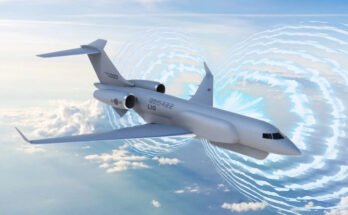by Richard Pettibone, Forecast International
Hindustan Aeronautics Ltd (HAL) is the dominant aerospace contractor in India, as well as one of Asia’s largest aerospace companies. Employing more than 34,450 technicians, engineers, and scientists, HAL produced the first military aircraft in South Asia (the HF-24 Marut), and today is involved in the design, development, and production of fixed- and rotary-wing aircraft and engines.
HAL’s principal indigenous projects have been the Dhruv advanced light helicopter and the Tejas light combat aircraft (LCA). HAL also performs licensed assembly for a variety of foreign platforms via cooperative arrangements with suppliers such as Airbus, Boeing, RAC MiG, Sukhoi, and Dassault.
While the firm is one of South Asia’s largest, it is also one of the slowest aviation firms in terms of bringing products to market. Several programs, such as the Tejas LCA and HJT-36 trainer, have been glacial in their development. The problem is so bad that the Indian Air Force turned abroad to meet its trainer needs with aircraft from Pilatus and BAE Systems. Despite the slow progress, India is committed to producing these systems, eventually.
With India seeking to modernize its forces and its industry, HAL is at the center of several major procurements with international partners. The firm currently is charged with local oversight of key defense projects such as the Fifth-Generation Fighter Aircraft (FGFA), Medium Multirole Combat Aircraft (MMRCA), and Multirole Transport Aircraft (MTA).
India’s FGFA project is a collaborative effort between Russia’s Sukhoi and HAL. The aircraft is based on Sukhoi’s T-50 PAK FA design, and India is looking to acquire 144 units, down from its original goal of 214. Though India bears 50 percent of the development costs, it currently has a smaller work share. Development costs on the project are expected to reach $12-$13 billion, which will be split between India and Russia. The first of three prototypes was to have been rolled out in 2014, but will likely arrive a year late.
For the MMRCA program, India chose the Dassault Rafale in 2012. However, the program has been delayed by extensive contract negotiations. Dassault will supply 18 of the 126 aircraft to the IAF from its facilities in France; the remaining aircraft will be produced at HAL facilities in Bangalore. As of December 2014, the $15 billion deal had yet to be closed. Delays in finalizing the order are attributed to cost and work-sharing issues, as well as elections in India. Officials hope to complete negotiations by mid-2015.
Another India-Russia collaboration is the Multirole Transport Aircraft. In 2012, HAL signed a contract with United Aircraft Corp, the corporate holding company of Russian fixed-wing-aircraft manufacturers, confirming HAL’s role in the MTA program. HAL will build the prototype aircraft and produce aircraft in India. Russia has promised to transfer necessary technology. The MTA will replace India’s Antonov An-32 transport aircraft. In December 2012, UAC announced a revised schedule, with the MTA expected to perform its maiden flight in 2017. Serial production will follow in 2019. For the moment this program is moving ahead, though if history is any indicator, delays can be expected.
HAL’s growing pains are all part of India’s strategy of becoming self-sufficient in indigenous military production. As such, support for these programs – delays and all – will be tolerated. However, with an IPO of a small stake scheduled, the days of this liberality may be numbered once shareholders have a say.
For 50 years, Forecast International intelligence reports have been the aerospace and defense industry standard for accurate research, analysis, and projections. Our experienced analysts compile, evaluate, and present accurate data for decision makers. FI's market research reports offer concise analysis of individual programs and identify market opportunities. Each report includes a program overview, detailed statistics, recent developments and a competitive analysis, culminating in production forecasts spanning 10 or 15 years. Let our market intelligence reports be a key part of reducing uncertainties and mastering your specific market and its growth potential. Find out more at www.forecastinternational.com



